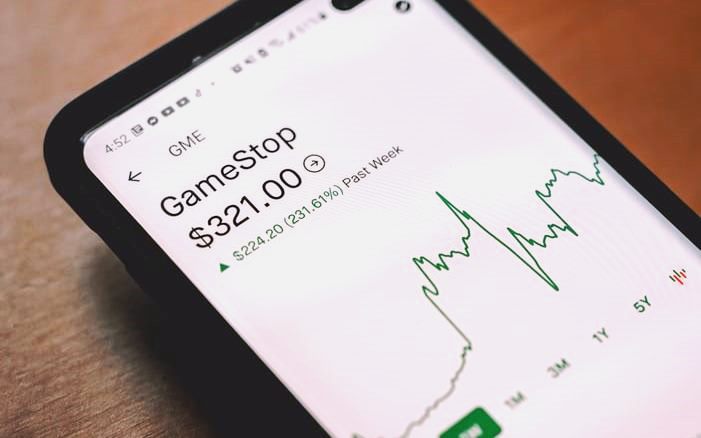GameStop: Where Do We Go From Here?

Image Source: Unsplash
On Wednesday, the memetic gaming retail chain GameStop (GME) dropped by 15%, going from Tuesday’s $23.50 to $19.93 per share. This puts the stock closer to its 52-week average of $17.80 and far removed from the 52-week high of $64.83 per share.
The driver behind the stock’s most recent volatility is the Q2 2024 earnings result released on September 10th. The company reported a significant drop in net sales, at $798.3 million vs $1.16 billion in the year-ago quarter.
This failed to meet analyst expectations at around $896 million. On the upside, GameStop surprised investors with a burst of profitability, reporting $14.8 million net income vs. $2.8 million net loss in the year-ago quarter.
Accordingly, the company massively beat analyst projections of $0.08 earnings per share loss vs reported $0.04 gain. For comparison, in the period’s prior year, GameStop was also in the negative EPS zone at $0.01.
At a glance, this would’ve made GME stock go up, but the greatly diminished revenue weight outweighed the upside. Despite surprise profitability, does that mean GameStop is on a downward trajectory?
GameStop Fundamentals Revisited
The first aspect of any company to examine is its revenue growth, is it consistent or sporadic? GameStop firmly falls in the latter category. The Q2 period marks a 31.4% year-over-year decline, on top of 28.7% YoY decline in Q1. GameStop’s financial history tells a consistent tale, with periods of growth becoming increasingly scarce.

GameStop’s annualized quarterly growth, image credit: MacroTrends
It is likely this trend will continue. After all, it is difficult to imagine a scenario in which lean digital platforms offering digital downloads and streaming would not outcompete a heavily burdened brick-and-mortar business model. From Epic Games and Steam to PlayStation Now, EA Play and Xbox Game Pass, they all bypass physical retail.
What would then be the role of GameStop as an intermediary? Of the total $798.3 million revenue in Q2, the company clearly relies on hardware and accessories, constituting 56.5% of sales. This is a major problem for GameStop given that hardware stores are even more readily available, both physical and online.
Collectibles are responsible for 17.5% while software, GameStop’s core business, is contributing 26% to revenue generation. All three categories tracked a severe decline in sales, with software sales almost cut in half from last year.

GameStop’s three bread winners are on a losing streak. Image credit: GameStop
At present, GameStop’s operating cost doesn’t justify this business model, inflicting another $31.6 million operating loss (adjusted) in Q2 2024, vs $20.7 million loss in Q2 2023. With that said, there is great space for GME stock speculation from an investing perspective.
GameStop’s Cash Treasury and Transformation
As of Q2 2024, GameStop holds $4.19 billion in cash and cash equivalents vs total liabilities worth $1.15 billion. It is fair to say that Keith Gill, aka Roaring Kitty, was a major contributor to this capital inflow as he rallied the memetic troops once again.
During these volatility periods driven by speculation, GameStop went on a selling spree. In May, this amounted to 45 million shares worth around $933 million, topped by 75 million shares in June, bringing in another $2.14 billion.
This quarter, GameStop filed for another stock offering worth 20 million shares, representing 4.7% of the outstanding share pool.
With substantial cash reserves, GameStop could readily leverage them to generate interest income, helping to offset its fixed brick-and-mortar expenses. More importantly, this gives the company necessary space to transform into an efficient e-commerce business.
From GameStop CEO Ryan Cohen’s statements, the focus is on cost reduction, expansion of higher value items and reduction of the store network. It also bears noting that the Fed is set to cut interest rates this year. In June’s shareholder meeting, Cohen stated that this dynamic plays a key role in his investment outlook.
GameStop holds an exceptionally low debt-to-equity ratio of 0.020, while its price-to-book ratio is 7.65. According to IMAA, median enterprise value to revenue ratio hovers at 1.12. The memery behind GameStop elevated it to a much higher 1.93.
Now that there is a hiking cycle exit on the horizon, access to cheap capital and debt restructuring are once again in play. With these cards on the table, GameStop’s valuation then becomes more fluid despite the underlying fundamentals.
In other words, GameStop valuation will likely be even more ripe for volatility than usual.
More By This Author:
Academy Sports + Outdoors Reports Mixed Q2 ResultsPLTR Set To Enter The S&P 500: Worth Buying Now Or Later?
Oracle Q1 Earnings: AI Strategy Takes Center Stage
Disclosure: The author does not hold or have a position in any securities discussed in the article.




Bullish.
